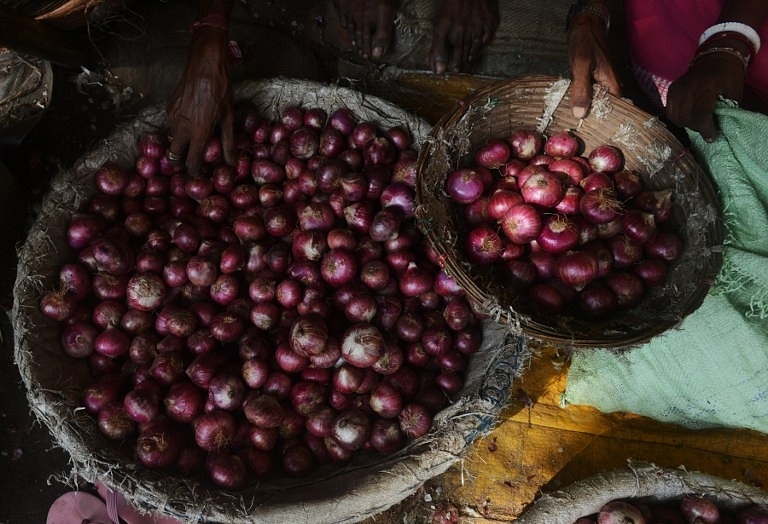Economy
Onion Prices Through The Roof: Everything You Wanted To Know About It

Onion prices are once again at those dreaded heights.
India is once again facing the all too familiar onion problem. On Thursday, onion was being traded at Rs 49/kg at Lasalgaon, Asia’s largest wholesale market for onions. As recently as June, the average price in the same market was Rs 15/kg. In the national capital, it is now being sold at Rs 80/kg at some places.
The graph below shows the sharp spike in retail prices of onion in Delhi since January this year.
Source: National Horticulture Board
Why are onion prices going through the roof?
The main onion growing areas of the country have received a double blow from the climate this year.
—Early in the year, they suffered from unseasonal rains.
—In the middle of the year, they suffered from deficient rains.
The rabi crop, which was harvested between March and May was damaged due to the unseasonal rainfall. To add to this, the sowing for kharif (monsoon crops) has been delayed due to deficient rains. As a result, the supply cannot be replenished any time soon. Hence, and as stated in this Live Mint report, onion prices are expected to remain painfully high till October.
The Union government meanwhile has asked the Metals and Minerals Trading Corporation of India (MMTC) to import 10,000 tonnes of onion to assuage the situation.
Which are these areas suffering from unseasonal and deficient rainfall?
According to official data, Bihar, Maharashtra Karnataka and Uttar Pradesh account for about 48% of India’s onion output. Herein, Maharashtra and Karnataka alone account for close to 40% of the produce. As the map below shows, these are the very states (shaded in orange) suffering from 20-59% deficient rainfall this year.
Source: India Meteorological Department
What is the solution to the problem?
This, and problems of similar nature, are bound to occur in India till agriculture is dependent on natural rainfall. Until we are able to provide irrigation facilities for our fields, shortages of some crop or the other is bound to happen. Monsoons, obviously, cannot be controlled and hence an annual minimum output cannot be guaranteed. That certainty can only be achieved, or at least partially so, by providing irrigation facilities to India’s farmers.
Introducing ElectionsHQ + 50 Ground Reports Project
The 2024 elections might seem easy to guess, but there are some important questions that shouldn't be missed.
Do freebies still sway voters? Do people prioritise infrastructure when voting? How will Punjab vote?
The answers to these questions provide great insights into where we, as a country, are headed in the years to come.
Swarajya is starting a project with an aim to do 50 solid ground stories and a smart commentary service on WhatsApp, a one-of-a-kind. We'd love your support during this election season.
Click below to contribute.
Latest